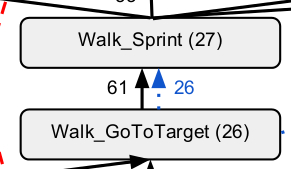This is the official site of the UT Austin Villa 3D Simulation team from the Department of Computer Science at the University of Texas at Austin.
This web page provides supplementary material to the following paper:
UT Austin Villa 2014: RoboCup 3D Simulation League Champion via
Overlapping Layered Learning
Patrick MacAlpine, Mike Depinet, and Peter Stone
Published in
the Proceedings
of the Twenty-Ninth AAAI Conference on Artificial
Intelligence (AAAI-15) in Austin, Texas, USA, January 2015.
The full paper can be found here.
This paper has been subsumed by the journal
article Overlapping
Layered Learning.











